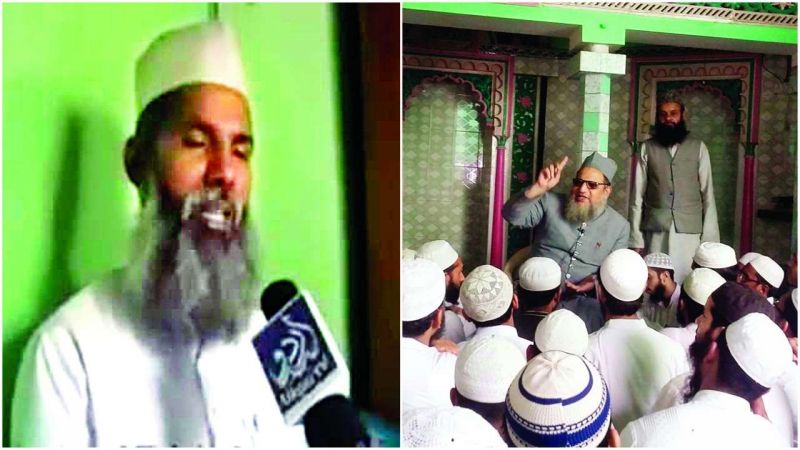For some former kar sevaks bringing down the Babri Masjid is now no longer a matter of pride but one of anguish. Once fiercely determined to the cause of the Ram temple these men have embraced Islam in a bid to find forgiveness.
Balbir Singh of Haryana, a former Shiv Sena leader from Panipat made history as he climbed atop the razed Babri Masjid, on a dateline India will never forget — December 6, 1992. But today he admits that it was his grave mistake to raze Babri Masjid. He embraced Islam in 1993 a year after Babri Masjid was demolished. Today he is better known as Mohammed Aamir.
During his visit to Madrasa-e-Islamia Tajveedul Quran, Shah Saheb gutta in Mahboob Nagar, Mohammed Aamir, known as the first karsevak on the dome to raze the Babri mosque, narrated dramatic story of his transformation. He says when he made the first hit at the Masjid, he felt restlessness and nervousness. But religiousness determination and youth didn’t stop him from carrying on. However when his condition deteriorated , the other Karsevaks shifted him to his house. He was feeling proud of his achievement. He received a hero’s welcome as he returned to his home town, Panipat. Two bricks were carried back by him which are still kept in the Shiv Sena’s office there. However his father, who was a teacher, closed the door of his house for him saying, the master who teaches that ‘Hindu, Muslim, Sikh, Esai; Aapas mein hain bhai bhai,’ his own son forced him hung his head in shame. ‘From that day, my heart and soul was remain of no use. When approached doctors told that I will live for two or three months’, recalled Aamir.
Meanwhile his colleague, Yogendra Pal Singh’s health also deteriorated, he used to look at women lustfully and tear his own clothes. Thus Allah humiliated him in the world itself. Everyone would beat him with slippers and shoes. His family confined him to the house. They did everything for his treatment; visited black magicians, tantriks etc. but to no avail. Finally after losing hope from all sides, Yogendra’s father visited Maulana Kaleem Siddiqui and told him the entire story. Maulana Kaleem Siddiqui advised him to do nothing but repent before Allah. Yogendra’s father started seeking forgiveness right in front of the local Masjid. Soon Yogendra’s condition began improving. Seeing this miracle, Yogendra and his father both embraced Islam. Yogendra reverted to Islam on January 10, 1993 and renamed himself as Mohammed Umar.
When Jogender told Balbeer Singh his story, the later also approached Maulana and came to the folds of Islam on June 11, 1993. Since then his heart and soul felt relieved and relaxed. He told that almost 27 karsevaks embraced Islam before Maulana Kaleem Siddiqui.
He vowed to construct and renovate 100 mosques during their lifetime as repentance for what he had done, so far he has managed 35.
Mohammed Aamir revealed that most of the Hindus who demolished Babri Masjid have either gone mad or died of some or other disease. While a few repented and embraced Islam.
Another kar sevak who embraced Islam is Shive Prasad, a former youth leader of the Bajrang Dal. As reported by DNA, Prasad had given training to about 4,000 kar sevaks. Within a year after the demolition, Prasad went deep into depression, suffering bouts of hallucination, blaming himself for having committed an “unforgivable sin.” Prasad visited psychiatrists, tantriks and saints but there was no peace in his mind. For the next five years, he lived the life of a recluse and in 1997, he went to Sharjah to seek employment. In 1999, he formally embraced Islam in Sharjah and became Mohammed Mustafa.

